#Arne Juhl
Text
Arne-pension gav uenighed mellem kandidater
Arne-pension gav uenighed mellem kandidater
Arne Juhl blev landskendt i 2019, da han blev udspillet til Socialdemokratiets udspil om ret til en tidlig pension. Lørdag formiddag var han til stede i Fredericias centrum, hvor han førte valgkamp med Socialdemokratiets kandidat, Jens Jonatan Steen. Af de tilstedeværende partier var der et enkelt, som vil have afskaffet Arne-pensionen.
Valgkampen er i fuld gang, og det var også tilfældet i…
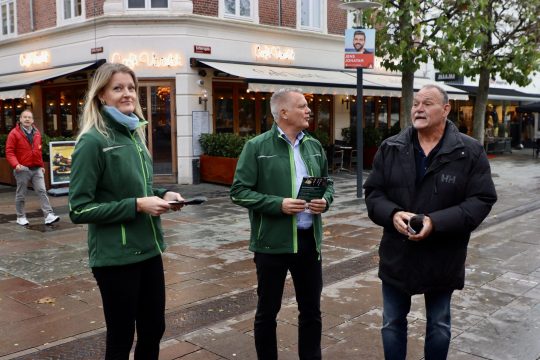
View On WordPress
#01#02#Arne Juhl#Arne-pension#De Konservative#Jens Jonatan Steen#Kirsten Hassing Nielsen#Louis Lindholm#Socialdemokratiet#Tobias Jørgensen#Venstre
0 notes
Photo

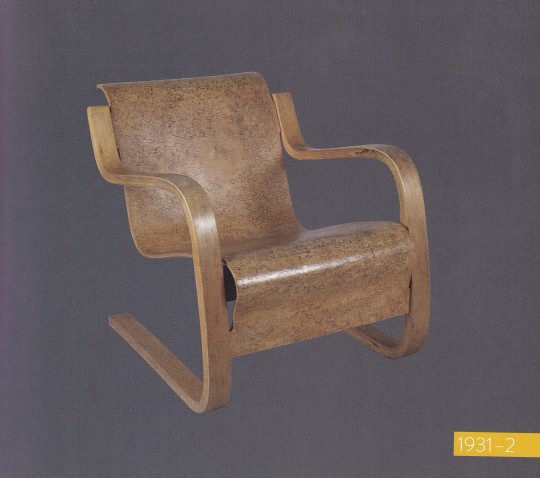
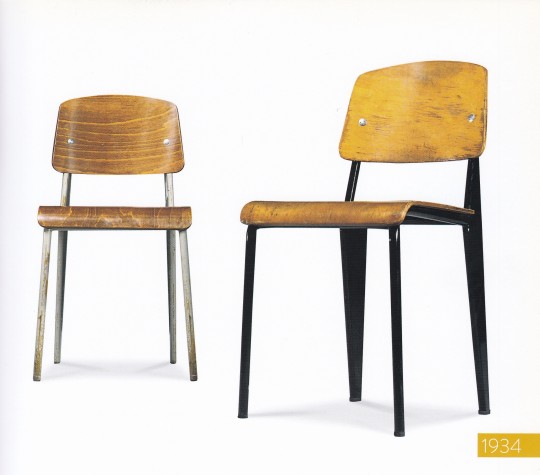

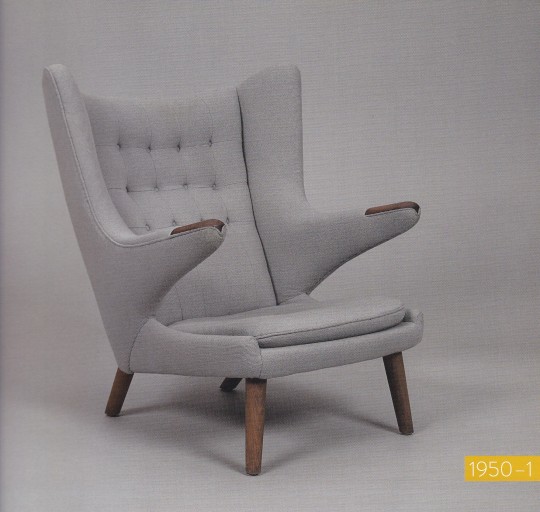
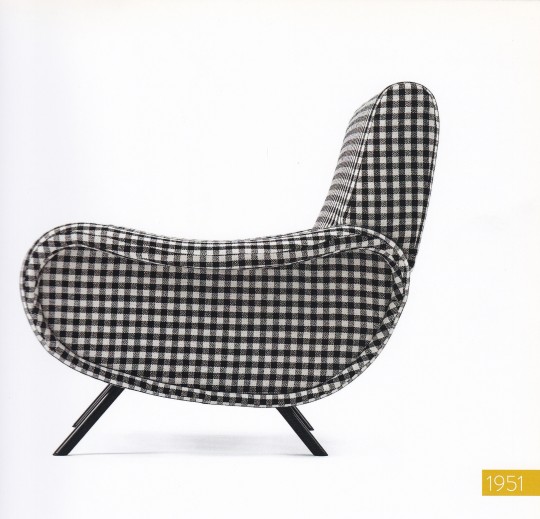

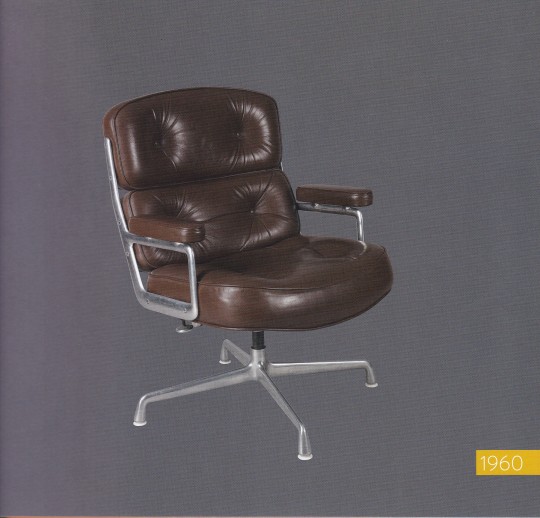
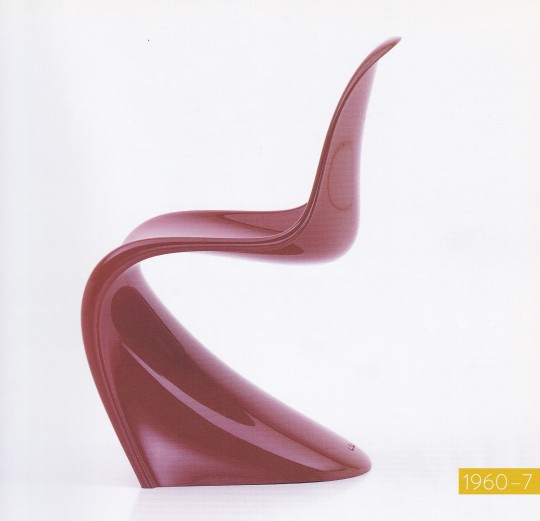
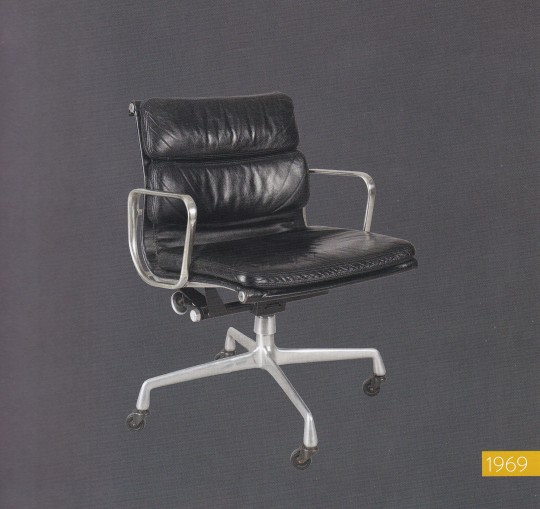
100 Midcentury Chairs
and their stories
Lucy Ryder Richardson
Pavilion, London 2016, 208 pages, 22,5 x 19 cm., ISBN 9781910904336
euro 20,00
email if you want to buy [email protected]
A stylish and informative guide to the best of Midcentury Modern chair design. These are the top 100 most interesting, most controversial, or simply most beautiful chairs from the period spanning 1930–1970, according to expert curator and chair addict Lucy Ryder Richardson.
Get to know the designers of the Modern era, and find out about the controversies, drama, gossip and intrigue that accompanied these fascinating figures. Featuring a range of top international names, including Robin Day, Charles and Ray Eames, Ernest Race, Arne Jacobsen, Pierre Paulin, Finn Juhl, Harry Bertoia, Ero Saarinen and Norman Cherner.
There is also an exploration into materials and manufacturing processes, plus lots of information about the manufacturers that brought chair designs to the masses, such as Knoll, Herman Miller, Fritz Hansen and Asko. Packed full of design details, historical facts, quotes and anecdotes – you can even find out the position in which the designers intended you to sit in their chairs! With a ‘chair timeline’, showcasing the very best of European, Scandinavian, Japanese and American design, this is the perfect book for collectors, enthusiasts and design junkies alike.
04/06/22
orders to: [email protected]
ordini a: [email protected]
twitter: @fashionbooksmi
instagram: fashionbooksmilano, designbooksmilano tumblr: fashionbooksmilano, designbooksmilano
#100 Midcentury Chairs#modern chairs design#1930-1970#Eames#Jacobsen#Finn Juhl#Bertoia#Saarinen#Knoll#Herman Miller#Mollino#design books#designbooksmilano#fashionbooksmilano
39 notes
·
View notes
Photo
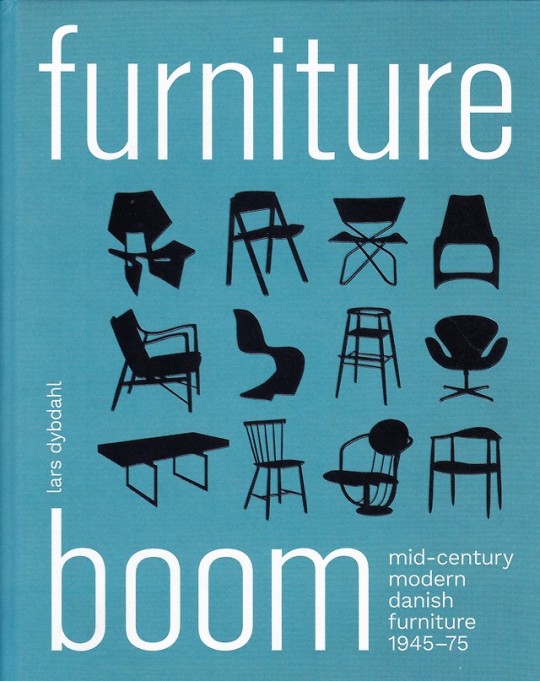
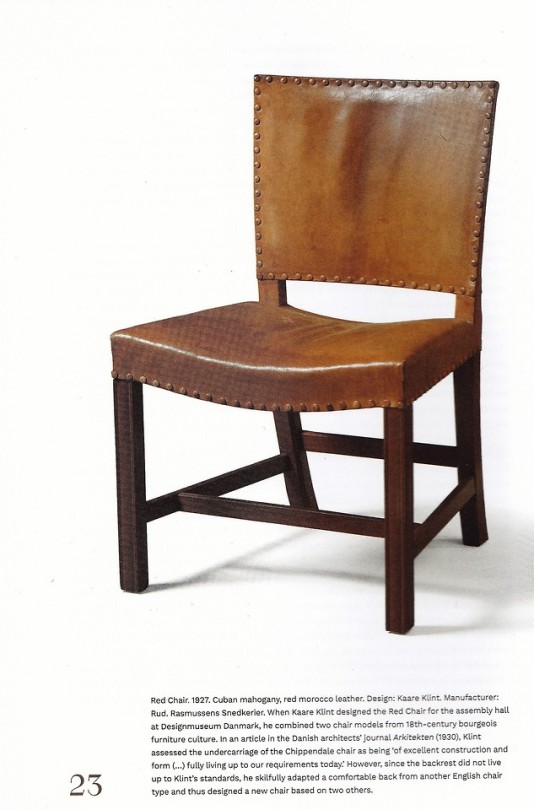
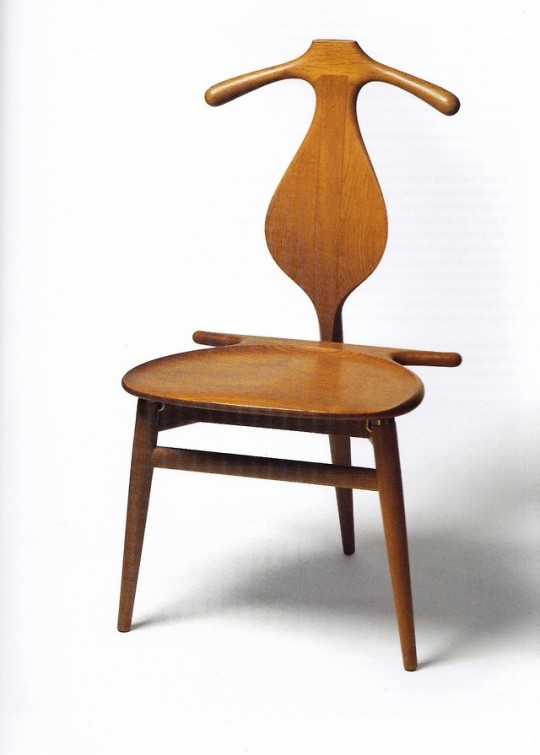
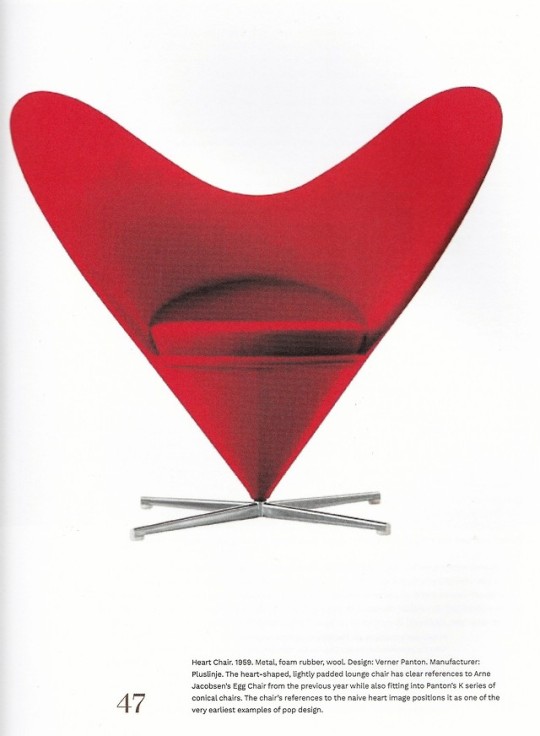
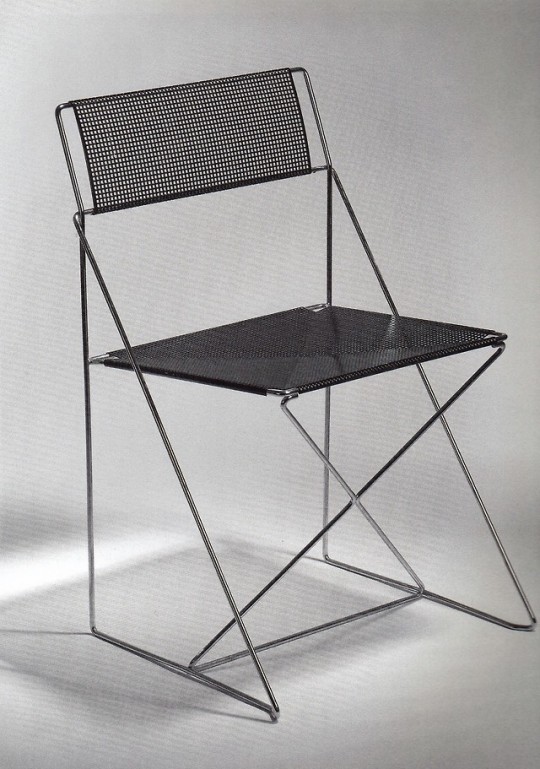

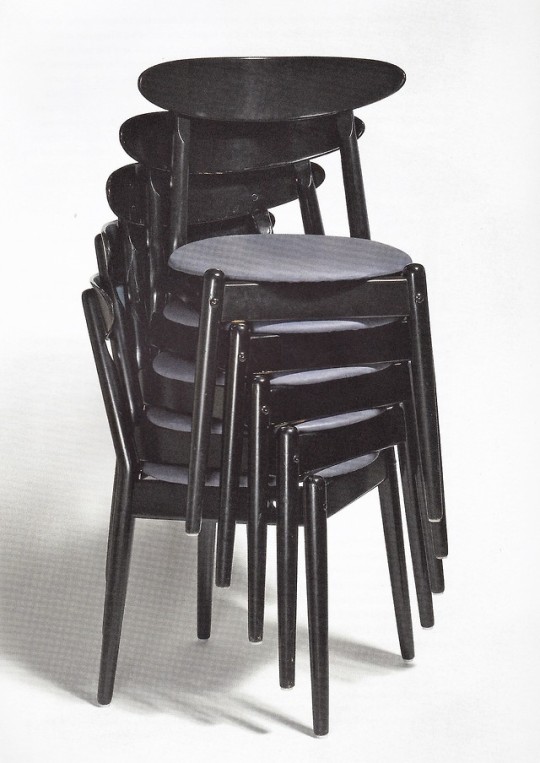


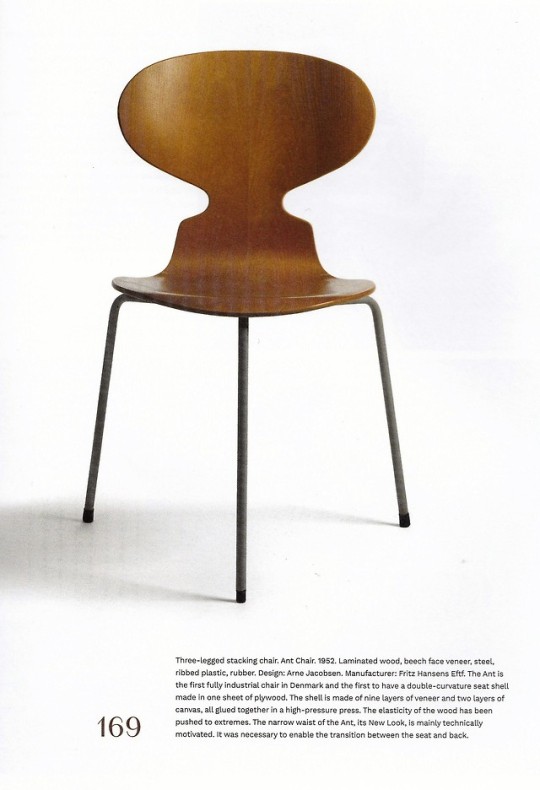
Furniture Boom
Mid-Century Modern Danish Furniture 1945-1975
Lars Dibdahl
Strandberg Publishing, København 2019, 304 pages, ISBN: 9788793604124
euro 78,00
email if you want to buy :[email protected]
Danish design is central to what has come to be known as the mid-century modern style; its iconic pieces are still considered classics and continue to inspire designers all over the world. But if pieces like Hans J. Wegner’s Y Chair (1950) and Finn Juhl’s Chieftain Chair (1949) carry an aura of timeless elegance now, they were born of a specific historical context.
In a new postwar welfare society, the demand for new kinds of furniture for new kinds of homes, workplaces and public institutions was booming. Danish furniture designers, cabinetmakers and industrial furniture factories were ready to deliver, with figures like Wegner, Juhl, Arne Jacobsen, Børge Mogensen, Poul Kjærholm and Verner Panton each contributing their own unique vision of what postwar modernity would look like.
Furniture Boom: Mid-Century Modern Danish Furniture 1945–1975 offers a comprehensive overview of the style that changed the world. Design historian Lars Dybdahl tells the story of the movement from beginning to end, describing and analyzing particular iconic pieces and situating them within their historical and cultural context.
Thirteen lavishly illustrated chapters explore the period’s new interior trends and production possibilities and highlight the diversity of Danish design in this period: from spindle constructions and laminated materials to wickerwork and nomadic furniture; from children’s furniture to storage solutions and office furniture; from the warm look of wood to cool steel, intensely colorful plastic chairs and sensuous lounge furniture. Furniture Boom is a design bible of the golden age of Danish furniture design, an essential resource for professionals and more casual admirers alike.
orders to: [email protected]
twitter: @fashionbooksmi
instagram: fashionbooksmilano
instagram: designbooksmilano
tumblr: designbooksmilano
#Danish Furniture#mid century modern#Hans J.Wegner#Finn Juhl#Arne Jacobsen#Verner Panton#Borge Modensen#Poul Kjaerholm#danish design#Lars Dybdahl#design books#design furniture inspiration#designbooksmilano#Borge Mogensen
14 notes
·
View notes
Text
Scandinavian modern vs Streamlining
Streamlining
The design movement Streamlining is an international style of art deco architecture and design that emerged in the 1930s. This movement was inspired by aerodynamic design, the architecture mainly emphasizes curving forms, horizontal lines and occasionally nautical elements. For industrial design use it was used in things such as; railroad locomotives, telephones, toasters, buses, appliances, and many other devices to give the impression of sleekness and modernity. From the progression of the Great Depression in the 1930s, the Americans saw a new aspect of art deco being streamlining, the concept was first conceived by the industrial designers who stripped art deco design of its ornament in favour of the aerodynamic pure line concept of motion and speed development from scientific thinking. This style was the first to incorporate electric light into architectural structure. The first class dining room in The Strand Palace Hotel foyer was one of the first uses of internally lit architectural glass, and coincidently was the first modern interior preserved in a museum. Streamlining appeared the most in buildings related to transportation and movement, such as bus and train stations, airport terminals, roadside cafes, and port buildings. Both streamlining and modern architecture shared common characteristics, for example a horizontal orientation, rounded corners, the use of glass brick walls, flat roofs, chrome-plated hardware, and horizontal grooves or lines in the walls.
Scandinavian Modern
In the 1950s the design movement Scandinavian modern emerged a combined movement at a similar time to modernism but in Nordic countries mainly: Norway, Sweden, Finland, Denmark, Iceland. The Scandinavian modern style prioritised democratic, affordable, sleek simple furnishings and interiors resulting in beautiful minimalistic yet functional timeless designs. Moreover, industrialization came late into these Nordic countries resulting in these countries mainly using traditional craft skills. You can see in Scandinavian modern designs that they still try to follow this traditionalist style. In addition due to the Nordic cod temperatures and short winter days most Scandinavian modern designs are made to be cosy yet bright. There are multiple key designers for the ear for example: Finn Juhl, Hans Wegner, and Arne Jacobsen who frequently used teak, rosewood, birch, and ash in their furnishings, which created warmth without being overly rustic. These designers achieved an elegant combination of practicality and sophistication that is unique to this deign era and not quite matched by any other. As a result, many of their furnishings remain in production today. However, this isn’t the only reason that Scandinavian design can be seen today and recognised globally. The reason for this is because of a Swedish businessman called Feodor Ingvar Kamprad who founded Ikea. Ikea is mainly based around furniture/3D design and allowed Scandinavian design to become affordable resulting in its now global recognition.
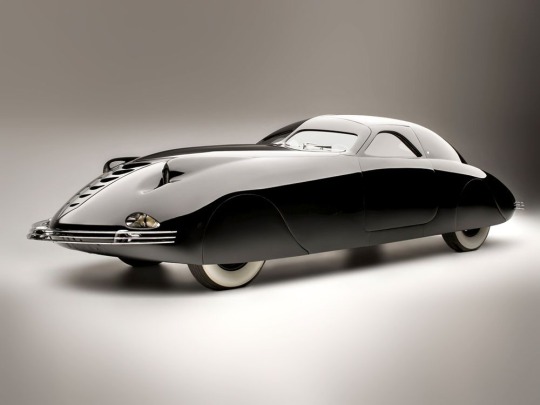

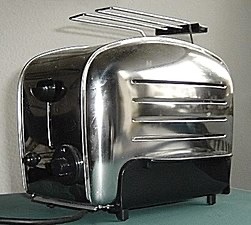
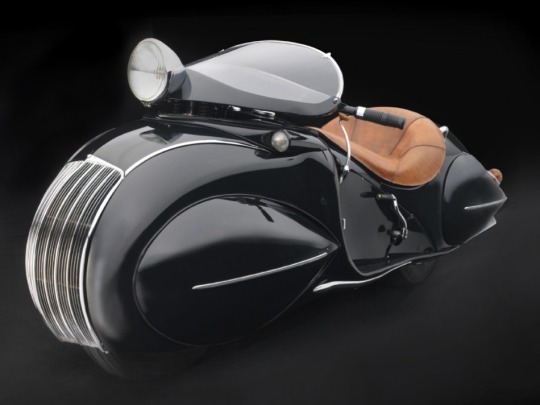



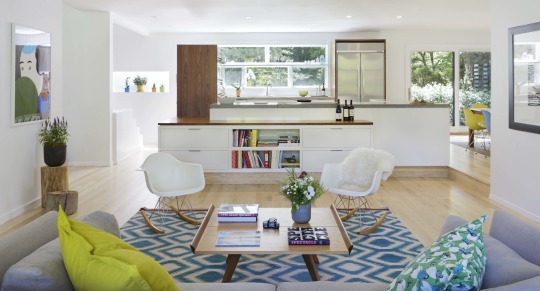
2 notes
·
View notes
Text
Scandinavian Modern vs. Streamlining
Scandinavian Modern
In the 1950s the design movement scandinavian modern emerged a combined movement at a similar time to modernism but in nordic countries mainly: Norway, Sweden, Finland, Denmark, Iceland. The scandinavian modern style prioritised democratic, affordable, sleek simple furnishings and interiors resulting in beautiful minimalistic yet functional timeless designs. Moreover, industrialization came late into these nordic countries resulting in these countries mainly using traditional craft skills. You can see in scandinavian modern designs that they still try to follow this traditionalist style. In addition due to the nordic cod temperatures and short winter days most scandinavian modern designs are made to be cozy yet bright. There are multiple key designers for the ear for example: Finn Juhl, Hans Wegner, and Arne Jacobsen who frequently used teak, rosewood, birch, and ash in their furnishings, which created warmth without being overly rustic. These designers achieved an elegant combination of practicality and sophistication that is unique to this deign era and not quite matched by any other. As a result, many of their furnishings remain in production today. However, this isn't the only reason that scandinavian design can be seen today and recognised globally. The reason for this is because of a Swedish businessman called Feodor Ingvar Kamprad who founded Ikea. Ikea is mainly based around furniture/3D design and allowed scandinavian design to become affordable resulting in its now global recognition
Streamlining
The design movement Streamlining is an international style of art deco architecture and design that emerged in the 1930s. This movement was inspired by aerodynamic design, the architecture mainly emphasizes curving forms, horizontal lines and occasionally nautical elements. For industrial design use it was used in things such as; railroad locomotives, telephones, toasters, buses, appliances, and many other devices to give the impression of sleekness and modernity. From the progression of the Great Depression in the 1930s, the Americans saw a new aspect of art deco being streamlining, the concept was first conceived by the industrial designers who stripped art deco design of its ornament in favour of the aerodynamic pure line concept of motion and speed development from scientific thinking. This style was the first to incorporate electric light into architectural structure. The first class dining room in The Strand Palace Hotel foyer was one of the first uses of internally lit architectural glass, and coincidently was the first modern interior preserved in a museum. Streamlining appeared the most in buildings related to transportation and movement, such as bus and train stations, airport terminals, roadside cafes, and port buildings. Both streamlining and modern architecture shared common characteristics, for example a horizontal orientation, rounded corners, the use of glass brick walls, flat roofs, chrome-plated hardware, and horizontal grooves or lines in the walls.
2 notes
·
View notes
Text
Celebrating a golden age of Danish design
Celebrating a golden age of Danish design
The golden age of Danish design reigned from the 1940s through to the 1960s, with designers such as Niels Otto Møller, Finn Juhl and Arne Jacobsen coming to the fore. Functionalism and simplicity remained at the heart of this aesthetic, working under the slogan “form follows function”.
In its first design sale of 2022 on Tuesday, May 24th, de Vere’s has some superb pieces from Danish designers,…

View On WordPress
0 notes
Text
Tomita Kazuhiko
Tomita Kazuhiko. Diseñador industrial y de producto.
Tomita Kazuhiko (1965, Nagasaki, Japón) se describe a sí mismo como un nómada errante entre el Este y el Oeste, y su trayectoria profesional y biográfica no hace más que confirmar esta teoría.
Como diseñador es capaz de construir nuevas marcas o de darles un nuevo giro, al aplicar su experiencia creativa en varios campos, desde el diseño gráfico hasta la arquitectura.
Tomita Kazuhiko estudió diseño industrial en la Universidad de Chiba en Japón (1989).
Posteriormente, en la década de 1990, gracias a una beca de Cassina & British Council, estudió diseño de muebles en el Royal College of Arts de Londres, donde se graduó en 1992.
Éste mismo año (1992) se mudó a la ciudad que es la meca del diseño industrial: Milán.
En 1993 diseñó la línea “Stars” de productos cerámicos en colaboración con Alessandro Mendini y Ettore Sottsass.
También en 1993 fundó el Studio 2.5-Dimensional Design (Milán) -que después se convertiría en Tomitadesign– empezando a presentar sus colecciones en ferias internacionales.
En el año 2000, se convirtió en director de Arte de la compañía COVO, y en este contexto, diseñó también la COVO Shop en la ciudad de Roma.
COVO, una marca con un ADN completamente italiano y raíces internacionales, combina elegancia con simplicidad, tradición y contemporaneidad, y clasicismo con diseño vanguardista.
En 2001 creó la colección de artículos de mesa “Rim” para Rörstrand, empresa de porcelana en Kungsholmen (Estocolmo, Suecia), junto con Vico Magistretti.<
Tomita Kazuhiko fue nombrado director de Arte de NUSSHA París en 2004, y desde entonces ha trabajado con varios fabricantes más, incluida por ejemplo, la empresa italiana Moroso.
Las creaciones de Tomita Kazuhiko son lúdicas, pero a la vez prácticas.
Con una mirada cuidadosa y sensible que combina armoniosamente forma y contenido promueve, sin sacrificar nada a la funcionalidad, la investigación y la experimentación que va desde el uso hábil de los materiales hasta la selección previsora de productores internacionales.
Su universo se encuadra dentro del arte y del estilo de vida tradicional japonés a la vez que convive con el concepto europeo de lo moderno. Sus ideas asumen el mismo objetivo, hacer artículos destinados a un uso global y prolongado que dure toda la vida.
Un factor de enlace entre todas sus creaciones es la simplicidad, pues para él éste es un factor muy importante, pero no la simplicidad llevada al minimalismo entendido como lo hacía la Bauhaus.
Para Tomita Kazuhiko la reducción a lo que es importante y esencial es una característica del shintoismo japonés, donde según su teoría los objetos inanimados también contienen energía espiritual.
Así por ejemplo, la colección de mesas de sobremesa”UkiYo” (2006-2007) para Moroso, realizadas en resina de poliéster co-moldeada, están decoradas con los patrones utilizados en los kimonos tradicionales e inspirados en Ukiyo, un movimiento cultural japonés del siglo XVIII.
Relacionado con el realismo sintoísta, que establece que nada puede permanecer sin cambios durante mucho tiempo, la filosofía de este movimiento (Ukiyo) vive cada momento al máximo como una forma, curiosamente, de alcanzar la vida eterna.
Desde esta perspectiva, la floración se convierte en el período anual más alegre y radiante, donde se extiende por todas partes la máxima cantidad de energía. Sin embargo, nadie puede decir si la flor recién florecida seguirá viva un momento después.
Las tapas o sobres de estas mesitas -con finísimas patas de acero tubular acabado en polvo RAL 3003 rojo brillante- se pueden invertir y utilizar como bandejas.
Su trabajo se ha exhibido a nivel mundial, en ciudades como Tokio (exposición individual “2.5-Dimensional Design“, Ozone Gallery, 1999); en Jerusalén (“FUSION: Arquitectura + Diseño en Japón“, 2002, Museo de Israel); Nueva York (Exposición “COVO”, 2002, galería Totem SOHO) o en Milán (“RE-FUSION”, 2003).
También sus productos han entrado en los museos para quedarse, como los productos que diseñó para la marca Essential, que se han integrado en la colección permanente del Museo de Arte Moderno de Nueva York.
Tomita Kazuhiko es profesor visitante en Diseño Industrial en la Universidad de Roma.
Y ha ganado numerosos premios internacionales a lo largo de su carrera, como por ejemplo el primer premio en el concurso “El futuro arquitectónico del acero inoxidable” (Londres, 1991) por Sir Noman Foster.
El Marchette Award Gold, RCA, (Londres, 1993); Distinción G-mark / Good Design Award (1998), Departamento de pequeñas y medianas empresas, JIDPO (Tokio), y The International Design Yearbook (1998 y 2002), Londres.
Tomita Kazuhiko (pág. web).
Tomita Kazuhiko y mesa de sobremesa”UkiYo” (2006-2007) para Moroso.
TodosABCDEFGHIJKLMNOPQRSTUVWXYZ
A
Achille Castiglioni
Adolf Loos
Alessandro Mendini
Alfredo Häberli
Alvar Aalto
Andrea Branzi
Andrée Putman
Andreu Carulla
Andy Martin
Antonio Citterio
Arend Groosman
Arik Levy
Arne Jacobsen
Atelier Oï
Atelier Van Lieshout
Autoban
B
BarberOsgerby
Benjamin Graindorge
Benjamin Hubert
Bertjan Pot
Boca do Lobo
C
Carlo Alessi
Carlo Mollino
Carlos Tíscar
Charles Rennie Mackintosh
Charles y Ray Eames
Claesson Koivisto Rune
Claudio Colucci
Curro Claret
D
David Adjaye
Dieter Rams
DimoreStudio
Doriana y Massimiliano Fuksas
Doshi Levien
E
Ed Annink
Edward van Vliet
Eero Aarnio
Eero Saarinen
Eileen Gray
Elena Manferdini
Elisabeth Garouste
Enrico Franzolini
Enzo Mari
Ettore Sottsass
F
Fabio Novembre
Färg & Blanche
Federica Capitani
Fernando Mastrangelo
Filippo Mambretti
Finn Juhl
Formafantasma
Francesco Rota
François Bauchet
Frank Gehry
Frank Lloyd Wright
Fredrikson Stallard
G
Gabriella Crespi
Gae Aulenti
Gaetano Pesce
Geoffrey Harcourt
George Nelson
George Sowden
Gerrit Rietveld
Gio Ponti
Goula Figuera
Greg Lynn
H
Hans J. Wegner
Héctor Serrano
Hella Jongerius
Hermanos Campana
Hervé Van der Straeten
I
Ico Parisi
India Mahdavi
Inga Sempé
J
Jaime Hayón
Jasper Morrison
Jean Prouvé
Jean Royère
Jean-Louis Deniot
Jean-Marie Massaud
Jean-Michel Frank
Jeffrey Bernett
Jens Risom
Joaquim Tenreiro
Joe Colombo
Johan Lindstén
Jonathan Adler
Joost Van Bleiswijk
Jörg Schellmann
Joris Laarman
Josef Hoffmann
Jurgen Bey
K
Kaare Klint
Kaj Franck
Karim Rashid
Kelly Wearstler
Kenya Hara
Kiki Van Eijk
Konstantin Grcic
L
Le Corbusier
Lex Pott
Lievore Altherr
Lindsey Adelman
Lucas Muñoz Muñoz
Ludovica y Roberto Palomba
Lukas Peet
M
Maarten Baas
Maarten Van Severen
Marc Newson
Marc Thorpe
Marcel Breuer
Marcel Wanders
Marco Acerbis
Marianne Brandt
Marie Christophe
Mario Bellini
Mario Ruíz
Martin Szekely
Martino Gamper
Massimo Iosa Ghini
Matali Crasset
Matteo Thun
Mattia Bonetti
Max Lamb
Michael Anastassiades.
Michele de Lucchi
Mies van Der Rohe
Miguel Milá
N
Nacho Carbonell
Nadadora
Naoto Fukasawa
Neil Poulton
Nendo
Nigel Coates
Nika Zupanc
Noé Duchaufour-Lawrance
O
Odosdesign
Oeuffice
Olivier Mourgue
Ora Ïto
OS and OOS
P
Paola Navone
Paolo Lomazzi
Patricia Urquiola
Patrick Jouin
Patrick Naggar
Patrick Norguet
Pedro Friedeberg
Peter Ghyczy
Peter Marino
Philip Michael Wolfson
Philippe Starck
Piero Fornasetti
Piero Lissoni
Pierre Charpin
Pierre Paulin
Piet Hein Eek
Poul Kjaerholm
Q
Quentin de Coster
R
Ricardo Fasanello
Richard Hutten
Richard Sapper
Rick Owens
Rodolfo Bonetto
Rodolfo Dordoni
Ron Arad
Ron Gilad
Ronan & Erwan Bouroullec
Ross Lovegrove
S
Sacha Lakic
SANAA
Satyendra Pakhalé
Scholten & Baijings
Serge Mouille
Sérgio Rodrigues
Seung-Yong Song
Shiro Kuramata
Simone Simonelli
Snarkitecture
Sori Yanagi
Sou Fujimoto
Stefan Diez
Stefano Giovannoni
Studio Job
Studio Kaksikko
T
Tapio Wirkkala
Tejo Remy
Thomas Sandell
Tobia Scarpa
Tokujin Yoshioka
Tom Dixon
Tomita Kazuhiko
Toni Grilo
Tord Boontje
U
Ueli y Susi Berger
UUfie
V
Verner Panton
Vico Magistretti
Vincent Van Duysen
Vincenzo de Cotiis
Vladimir Kagan
Von Pelt
W
Warren Platner
William Plunkett
William Sawaya
X
Xavier Lust
Xavier Mañosa
Y
Yrjo Kukkapuro
Yves Béhar
Z
Zaha Hadid
Zanuso
from https://decorador.online/disenadores-destacados/tomita-kazuhiko/
1 note
·
View note
Photo
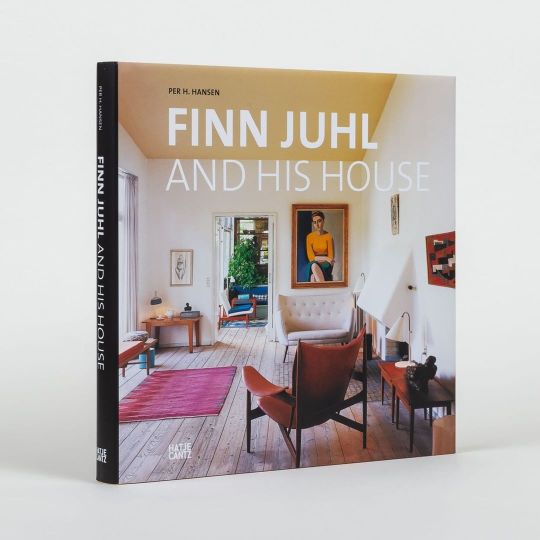
Good news! Bookseller favorite 'Finn Juhl and His House' is Back in Stock from @hatjecantzverlag The Danish design scholar @birgitlyngbye discovered the work of Finn Juhl (1912-1989) when she was looking for a suitable sofa for her 1950s home. Juhl's furniture is undergoing a renaissance at present, and when his house in Charlottenlund--which he designed and decorated in 1941-42--came up for sale, Pedersen purchased the building and all of its furnishings, presenting it immediately afterward to the adjacent @ordrupgaard This monograph takes a look at Juhl--who, alongside Hans J. Wegner and Arne Jacobsen, is one of the most important Danish modernists--in an agreeable, unpretentious fashion. Per H. Hansen, a renowned expert in Scandinavian furniture design, provides a humorous, extremely informative description of Juhl's unconventional character and his classic furniture--the Chieftain Chair, the Pelican Chair, the Poet Sofa. Drawings, photographs, images of the newly curated house (2008) and an amusing final chapter about his patrons round off this unusual and atmospherically illustrated tribute to the brilliant Danish designer and his own home, an icon of good taste. #finnjuhl #finnjuhlhouse @houseoffinnjuhl #houseoffinnjuhl https://www.instagram.com/artbook/p/CYuX6ZzpvaX/?utm_medium=tumblr
1 note
·
View note
Text
Характер нордический: главное о датском дизайне
Датский дизайн интерьеров— это не просто эстетическое течение. Это культурный и генетический код, а ещё — часть политики государства, полностью ориентированной на человека и его благополучие.
Нацпроект социального государства
Дания — одна из тех стран, про которые говорят, что художественный вкус у её жителей заложен в крови. Если наше видение интерьерного и предметного дизайна вместе с эстетикой быта ещё только формируются, то в Дании всё это существует в виде национальной идеи на протяжении ста лет.
Главная причина становления дизайн-отрасли — инвестиции и поддержка государства. Именно это произошло в 1920-30 годах, когда правительство решило вкладываться в дизайн, воспринимая его как способ благоустроить повседневную жизнь. С каждым следующим поколением дизайн оттачивался, чтобы в конце концов сложиться в государствообразующую индустрию и национальный бренд, признанный на международном уровне.
Как это было
В 1924 году один из родоначальников датского дизайна Кааре Клинт (Kaare Klint) основал факультет мебельного проектирования в Академии художеств Копенгагена. Обучение там строилось на исследовании и анализе прежних мебельных традиций, их оптимизации и отказе от всего лишнего.
В 1930 году на выставке в Стокгольме появились работы модернистов, которые впечатлили прежде консервативных датских архитекторов. В мебельной индустрии начались изменения. Если до этого по части авангарда в Скандинавии лидером считалась Швеция, то к 1950 году символом скандинавского дизайна стал датский модернизм.
Предметный дизайн интерьеров как филиал архитектуры
Первые датские дизайнеры себя дизайнерами не называли. Это были архитекторы. Проектируя здание, они создавали для него обстановку «под ключ», после чего предметы обстановки — мебель, светильники и аксессуары — начинали жить своей жизнью. Так, знаменитые кресла Арне Якобсена (Arne Jacobsen) «Яйцо», «Лебедь» и «Капля» были изначально спроектированы для интерьеров гостиницы SAS Royal Copenhagen (1960-е гг.), после чего ушли в серийное производство и выпускаются на фабрике Fritz Hansen по сей день.
Американское влияние
За качественный международный пиар датского дизайна стоит поблагодарить американцев: скромные датчане не искали славы за пределами своего обособленного мира. В середине XX века предприниматели и байеры из США часто приезжали на мебельные выставки в Копенгагене с целью найти что-нибудь интересное для своих соотечественников. Это и положило начало мировой славе датского дизайна.
Америку стоит поблагодарить не только за пиар — американский дизайн повлиял на датский и в идейном плане. В предметном дизайне Дании проявилось влияние заокеанских тенденций: например, обтекаемые формы, вдохновлённые работами Исаму Ногучи (Isamu Noguchi) и Александра Колдера (Alexander Calder), скульптурные формы из прессованной фанеры, заимствованные у супругов Имзов (Charles and Ray Eames). Американский спрос способствовал и тому, что у датских предметов вместо фабричных индексов всё чаще стали появляться названия — «Муравей», «Дельфин», «Чайка», «Артишок».
Ещё один интересный факт: именно американцы вывели в свет Финна Юла (Finn Juhl), чьи сюрреалистические проекты долгое время не находили отклика от датчан, и Юль считался на родине дизайнером второго ряда.
0 notes
Photo
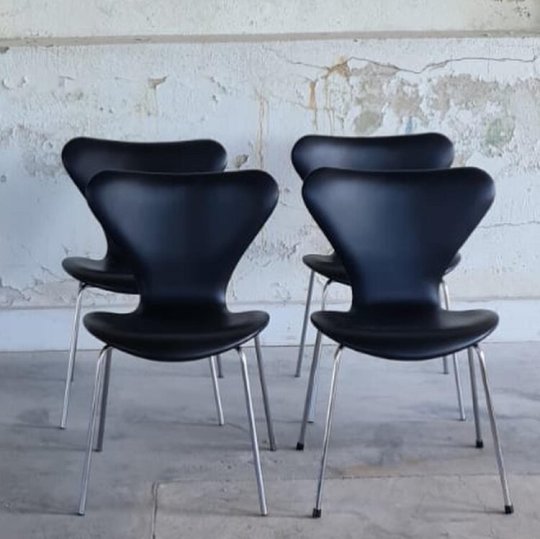
Finn Juhl Stol
Furniture speaks the most important point of the house and this creates luxuries and uniqueness that loads up the house so there are different setters and unique designs like Finn Juhl Stol and furniture that make a huge difference in the room. You always buy eye-catching furniture for your home, mmdesign1970 provides the Arne Jacobsen møbler, Kasper Salto, and Finn Juhl Stol furniture online. Now you can book easily.
0 notes
Text
FREE EBOOK Furniture Boom Mid-Century Modern Danish Furniture 1945-1975 [PDF EPuB AudioBook Ebook]
FREE EBOOK Furniture Boom: Mid-Century Modern Danish Furniture 1945-1975 [PDF,EPuB,AudioBook,Ebook]
Furniture Boom: Mid-Century Modern Danish Furniture 1945-1975

[PDF] Download Furniture Boom: Mid-Century Modern Danish Furniture 1945-1975 Ebook | READ ONLINEhttp://read.ebookcollection.space/?book=8793604122
Author : Lars Dybdahl
Publisher : Strandberg Publishing
ISBN : 8793604122
Publication Date : 2019-2-19
Language :
Pages : 384
To Download or Read this book, click link below:
http://read.ebookcollection.space/?book=8793604122
EBook
Synopsis : FREE EBOOK Furniture Boom: Mid-Century Modern Danish Furniture 1945-1975 [PDF,EPuB,AudioBook,Ebook]
Danish design is central to what has come to be known as the mid-century modern style; its iconic pieces are still considered classics and continue to inspire designers all over the world. But if pieces like Hans J. Wegner’s Y Chair (1950) and Finn Juhl’s Chieftain Chair (1949) carry an aura of timeless elegance now, they were born of a specific historical context. In a new postwar welfare society, the demand for new kinds of furniture for new kinds of homes, workplaces and public institutions was booming. Danish furniture designers, cabinetmakers and industrial furniture factories were ready to deliver, with figures like Wegner, Juhl, Arne Jacobsen, Børge Mogensen, Poul Kjærholm and Verner Panton each contributing their own unique vision of what postwar modernity would look like. Furniture Boom: Mid-Century Modern Danish Furniture 1945–1975 offers a comprehensive overview of the style that changed the world. Design historian Lars Dybdahl tells the story of the movement from beginning to end, describing and analyzing particular iconic pieces and situating them within their historical and cultural context. Thirteen lavishly illustrated chapters explore the period’s new interior trends and production possibilities and highlight the diversity of Danish design in this period: from spindle constructions and laminated materials to wickerwork and nomadic furniture; from children’s furniture to storage solutions and office furniture; from the warm look of wood to cool steel, intensely colorful plastic chairs and sensuous lounge furniture. Furniture Boom is a design bible of the golden age of furniture design, an essential resource for professionals and more casual admirers alike.
0 notes
Photo


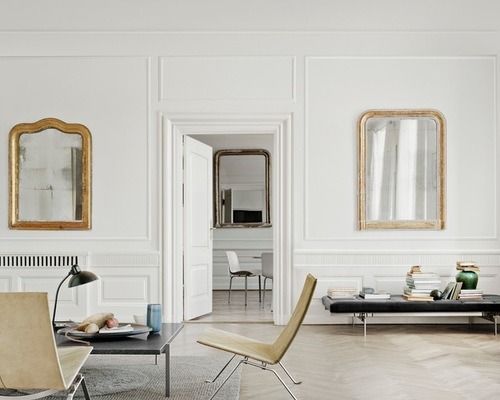
1. Drop chair by Arne Jacobsen for Fritz Hansen. Designed and launched in 1958; relaunched in new colors and materials in 2014.
2. Pelican chair by Finn Juhl. Designed and launched in 1940; relaunched by Onecollection in 2001.
3. PK22 lounge chair, launched in 1956, and PK80 daybed, launched in 1957, by Poul Kjærholm for Fritz Hansen.
6 notes
·
View notes
Text
Mid Twentieth Century Scandinavian Design Dining Tables
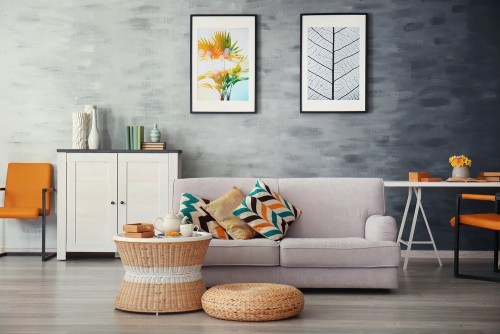
In the mid-20th century, innovation emerged as a crucial element of American internal type. One of one of the most substantial facets of the Mid-Century Modern action is actually the appearance of Scandinavian design, frequently pertained to as "Danish Modern." Today, Danish Modern dining tables are actually focal points for a stable of enhancing types, functioning properly along with every type, from traditional to contemporary.
Beauty in Timber
If timber table are actually essential to a style program, Finn Juhl's traditional Judas dining table, an expanding-leaf table created in rosewood along with silver inlay, and also his Decrease Point Table, also in rosewood, blend modern collections with timeless materials. Baker Household Furniture in Grand Rapids, Michigan, made Juhl's styles, so the accessibility of authentic old items is not as limited similar to various other designers, although fine examples are actually still both extremely preferred and important. For examples of exactly how Juhl functioned his dining home furniture in to a domestic environment, photos of his personal residence are actually readily available. Your home has been actually restored to its own authentic condition, and photographs present the Judas dining table coupled with his environment-friendly opulent Egyptian chairs from 1949.
Style through Amounts
youtube
Arne Vodder, a pupil of Finn Juhl's, additionally teamed up with organic materials, specifically rosewood as well as teak wood. While he is actually best-known for a collection of multicolored counters that wed intense, present day different colors along with the warmth of lumber, he also designed a variety of dining tables. Acknowledging that shape and also kind can incorporate enjoyment to the traditional dining table, Vodder made oval tables such as his Model 212, as well as extension fallen leave dining tables like his model 227.
Past Hardwood
Poul Kjaerholm educated as a builder before examining at the Danish University of crafts and arts. While many of his contemporaries paid attention to lumber dining tables, Kjaerholm looked into an assorted series of additional components consisting of stone and steel. Kjaerholm looked at steel an organic product, presuming perhaps used in an internal much like fine wood. When developing inner parts with a smooth visual, Kjaerholm's round PK 54 dining table combines steel and marble in a design of classic ease. A later , the PK58, adapted the form as well as materials of the PK 54, was actually put into manufacturing through Fritz Hansen after Kjaerholm's death. To find out more details about home decor with antique furniture: going here.
Wegner's Organic Modernism
Best known for designing chairs, featuring his iconic Round Chair, which was used in the Nixon-Kennedy dispute, Danish developer Hans Wegner additionally created table. His rectangular CH318 mixes steel lower legs, a hard wood leading as well as medium-density fiber board extension leaves, offering owners the choice of possessing the coziness of hardwood or even the variant of the organic along with the multicolored. Considering that Wegner explored a clean cosmetic that integrated the sculptural and the all natural, his eating sets function as simply in a typical Mid-Century home as in residences either more traditional or even extra modern.
0 notes
Text
House tour: a sprawling Mad Men-inspired apartment in the Netherland

In the living room, Groundpiece sofa by Antonio Citterio for Flexform, enquiries to Fanuli; Chieftain armchair by Finn Juhl; vintage wenge coffee table found in Brussels; Alwa Two side table by Sebastian Herkner for Pulpo, enquiries to Hub Furniture; vintage floor lamp found in Brussels; vintage lamp (in left corner) with leaf pattern from Galerie Chalet Design; En Suite rug by Mae Engelgeer from Frankly Amsterdam; solid walnut wall panelling; floor tiles (on podium) from Dominique Desimpel; sculpture (on back wall) found in Lisbon; artwork by Emma Bernard from Brussels Design Market.
Stark minimalism and sumptuous tactility teasingly rub shoulders in this penthouse apartment in the southern Netherlands city of Maastricht. With surprises at every turn, it embraces a sense of discovery in the spirit of the great Dutch explorers.
The owners, style-savvy expats, envisioning this as a pied-à-terre in their home city, had clear, if eclectic, ideas of what they wanted when they briefed Amsterdam interior designers Nicemakers back in 2017. “Design for us a comfortable home,” they told principals Joyce Urbanus and Dax Roll, “where the architecture of the Bauhaus meets the glamour of the Chrysler Building, where furniture designer Jean Prouvé meets interior designer [and architect] Joseph Dirand, where interior designers [and one-time set designers] Roman and Williams meets Mad Men and where Swiss minimalist architect Peter Zumthor meets The Wolf of Wall Street’s Jordan Belfort.”
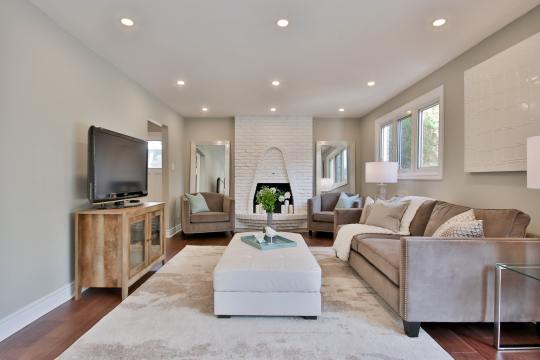
In the dining area, custom dining table and Luca chandelier, both from Fiona McDonald; Beetle chairs from Gubi, enquiries to Cult; chairs upholstered in Glant fabric, enquiries to Ascraft; vintage cabinet found in Brussels; Civetta spotlights from Aldo Bernardi; rug from Amadi carpets; vintage vases, iron sculpture (all on cabinet), and sculpture (on dining table), all from Nicemakers’ private collection.
While the brief — with leanings towards Manhattan, European modernism and the cinematic — may have been lofty and expansive, so too is the apartment, a three-level concrete aerie atop a 1960s building. One of Maastricht’s few high-rises, it affords stunning views over the city centre. Those bird’s eye panoramas and the design potential, together with a touch of nostalgia, underlined the building’s appeal for the globetrotting professionals.
“As a boy, I walked along these streets and knew the building,” says one of the owners. “It always intrigued me.” In its former life it was a nurses’ hostel and then offices sat behind the functional facade. When a developer divided the building into apartments, the couple bought one apartment on the ninth level, both apartments on the 10th level and combined all into a three-bedroom home. As an added bonus, the top level included a roof terrace with 360-degree views.
In the breakfast area, T21B dining table by Pierre Chapo from Morentz; Chandigarh chairs by Pierre Jeanneret from SixGallery; custom brass mesh and black steel storage system with solid walnut handles designed by Nicemakers, produced by Soons Interieurbouw; vintage credenza from Paul Bert Serpette; ornament (on credenza) from Philippe Kersten; artwork by Piet Killaars; glass lamps found in Brussels; Tribeca rug from Massimo Copenhagen; custom smoked and stained solid oak flooring from Bloemen Parket.
“When we first entered,” says the other apartment owner, “it took us just ten seconds to decide to buy the apartments for the renovation project.” The internal walls were demolished, leaving just the shell, a blank slate for Nicemakers, whom the couple hired on the advice of a friend. “From the outside, the building is quite boring,” confesses Roll, “but the inside, especially the stripped tenth floor with its bare concrete and the beautiful rhythm of all the square windows, had the wow factor.”
Fusing all those design influences, the owners wanted “to create a 1960s and ’70s feeling, with warm colours, custom elements, vintage mid-century modern elements and a cossetting living space.” And all that within the building’s brutalist concrete backdrop.
On the terrace, vintage leather chairs from Brussels Design Market; Caldas coffee table from Mambo Unlimited Ideas; 1960s ashtray stand; dining table from Le Grenier de Sasha; Series 7 chairs by Arne Jacobsen for Fritz Hansen from Le Grenier de Sasha, enquiries to Cult; floor lamp by Serge Mouille, enquiries to Cult; walnut timber ceiling.
Drama and gradual reveals are recurring themes, perhaps not surprising when TV and movie sets imbued the brief. “I saw film sets in front of me and everything came to life,” says Urbanus who, with Roll, has created a series of atmospheric spaces resembling mises en scène. “The elevator door on the ninth floor opens and you immediately find yourself in the world of Mad Men, feeling the ambience and expecting to hear Don Draper’s favourite music,” says Roll.
In the main bedroom, custom bed designed by Nicemakers, produced by Soons Interieurbouw; custom desk by De Intuïtiefabriek; Nimbus side table by Heerenhuis, enquiries to Spence & Lyda; custom bench designed by Nicemakers, produced by Soons Interieurbouw; Riddle bedside lamps by Bert Frank; Chasing Light rug from Frankly Amsterdam.
This club-like entry level contains a lounge area, study, kitchen and two guest bedrooms. “Here the clients wanted a more feminine ambience, hence the intimate salon feeling,” says Roll. Walk up the stairs and it’s like a curtain lifting on a theatre production, the drama reveals itself on a minimalist stage — walls, ceilings, columns and lift shaft are expressed in concrete formwork. Textured glass sliding panels envelop the basalt stairwell connecting the floors, with sunlight creating shadow plays on the glass, while herringbone timber, marble and terrazzo floors layer on the luxe, further expressed in deep velvets, leather and brass. Classic 20th-century furniture, lamps and accessories were gleaned at fairs, auctions and at galleries in Milan, Paris, Brussels and New York.
In the kitchen, custom counter with antique brass frame and Pyrolave enamelled lava stone benchtop designed by Eginstill in collaboration with Nicemakers; custom rangehood by Eginstill; Tumbler pendant lights by Lee Broom, enquiries to Space Furniture; Eiffel 1000 single wall light from Frama.
As the clients are keen entertainers, Roll and Urbanus placed the kitchen centrestage of the vast open-plan zone, which shares the upper floor with the main bedroom suite. The island, in the form of a bentwood chairs with brass frame and lava-stone top, surveys the entire loft space. To the left, the eye journeys towards the living room and dining area, while to the right it takes in the informal meals area with the main bedroom beyond. Service areas, tucked in behind the stairwell and clad in walnut, feature a small intimate passage that leads towards the bedroom.
In the bathroom off the main bedroom, custom natural stone sink designed by Nicemakers, and marble floor tiles, both from Solid Nature; Landmark Industrial tapware by Samuel Heath; vintage brass wall lights found in Brussels; vintage mirror from Galerie Libelle.

“We love to introduce perspectives that invite you to discover an interior and modern bentwood furniture, introducing a flow but also a connection,” says Roll. “They tease the eye and let you see the different spaces with one glance. Then light, layout and the various settings take you by the hand and guide you through.” Like artworks on constant rotation, the uniform square windows enclosing the apartment frame ever-changing views beyond.
In the sauna, zellige floor and wall tiles from Emery & Cie; Landmark Industrial tapware by Samuel Heath.
The apartment revels in surprises and contradictions. “It shows as a warm and comfortable interior,” says Urbanus, “but look closely and you will see the complex details, the interiors’ second layer, including the materials and textures, and carefully chosen furniture, lamps and accessories. They caress the senses.” The interior is rich but with an industrial edge, simple and natural but layered and complex, raw yet sophisticated and, perhaps most importantly for the owners seeking a home, it looks lived in, despite being so new.
1 note
·
View note
Photo
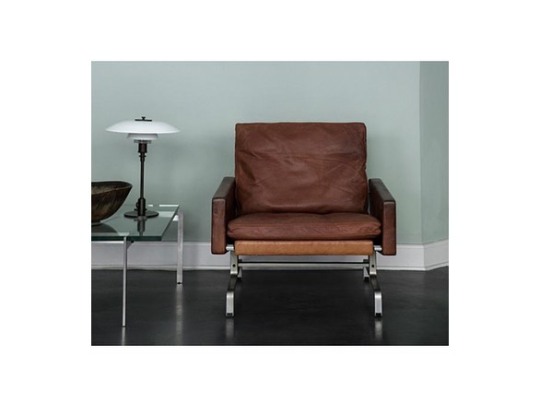
KLASSIK ‘KLASSIK’ is a specialist shop in Copenhagen dealing in used Danish furniture classics. For more than 20 years the shop has gained a unique expertise in modern Danish furniture design and acquired a selection unmatched - anywhere in the world. The shop in Bredgade street in central Copenhagen has a large selection of furniture on display. There are new items coming in every day and all items are carefully selected and restored with respect for their history and craftsmanship. The staff is at your disposal with advice about everything from interior decoration to the maintenance of your furniture. At ‘KLASSIK’ you will find expertly engineered craftsmanship alongside some of the best industrial furniture - and they always have a large selection of furniture from the best Danish designers, think; Poul Kjærholm, Arne Jacobsen, Hans J. Wegner, Finn Juhl. ‘KLASSIK COPENHAGEN’, Bredgade 3, Copenhagen 1260, Denmark. #neonurchin #neonurchinblog #dedicatedtothethingswelove #suzyurchin #ollyurchin #art #music #photography #fashion #film #words #pictures #neon #urchin #copenhagen #denmark #midcenturyfurniture #midcenturymodern #poulkjærholm #arnejacobsen #hansjwegner #finnjuhl #klassikmodernemøbelkunst #klassikcopenhagen (at Copenhagen) https://www.instagram.com/p/CDLjj8OlqMu/?igshid=1tkmyph159w2h
#neonurchin#neonurchinblog#dedicatedtothethingswelove#suzyurchin#ollyurchin#art#music#photography#fashion#film#words#pictures#neon#urchin#copenhagen#denmark#midcenturyfurniture#midcenturymodern#poulkjærholm#arnejacobsen#hansjwegner#finnjuhl#klassikmodernemøbelkunst#klassikcopenhagen
0 notes
Photo
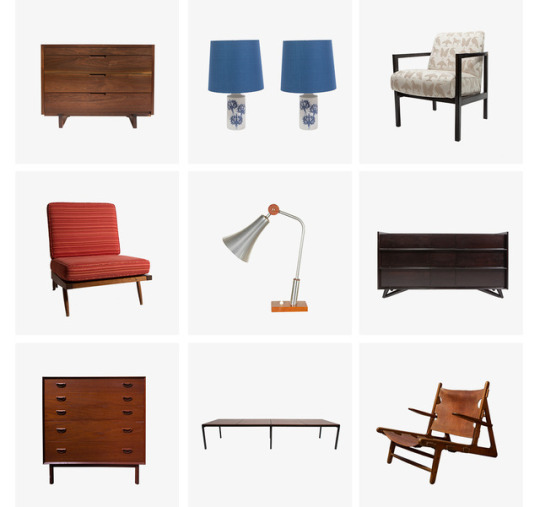

Our sale continues. From the basement up. Showroom open Saturday from 1-5PM. Very large, additional discounts and special offers in store.
#sale#midcenturymodern#george nelson#florence knoll#herman miller#arne vodder#finn juhl#baker#dunbar#edward wormley#paul mccobb#planner group#george nakashima#Borge Mogensen#royal copenhagen#poul kjaerholm#hans wegner
0 notes